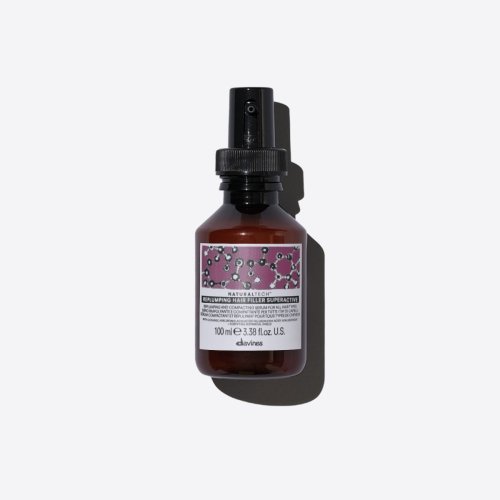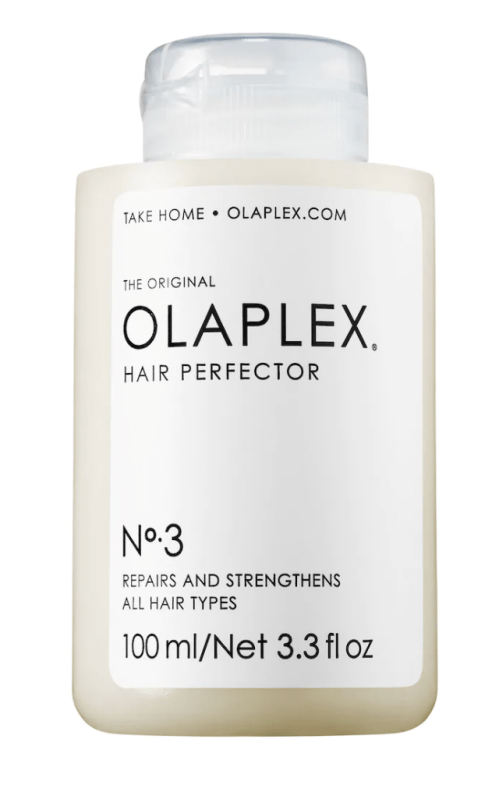Our editors independently select these products. Making a purchase through our links may earn Well+Good a commission
Knowing the Difference Between ‘Dry’ and ‘Damaged’ Hair Will Help You Avoid Wasting Money on Products
Before you choose a product, you first need to ask yourself a question: is your hair damaged or dry? Because the treatments are different.

Here’s a fun fact: In the world of hair-care products, “moisture” and “repair” are not the same thing. And if you don’t know which your strands actually need, the formulas you’re using may be doing them more harm than good—sort of like using oily-skin products to fix a dry complexion.
Experts in This Article
hairstylist and colorist at Vida. Hair Studio
What makes this so confusing is the fact that “damaged hair” tends to be an umbrella term, and we’re often marketed both hydrating products (which target dryness) and reparative products (which target structural damage) without being given quite enough information to decide which we actually need. You might remember it this way: “The difference between repair and moisture is hard and soft,” says Vida Scheibe hairstylist and hair color artist at Ashen Salon in La Jolla, CA. “‘Repair’ is for structure, and ‘moisture’ is for suppleness and elasticity.”
But that’s only the tip of the iceberg. Keep reading for everything you need to know.
Dry hair vs. structurally damaged hair
In simplest terms, “dry” hair is hair that’s lacking moisture. In most cases, this will show up in the form of frizz, because your hair is essentially drinking up moisture from the air to try and quench its dehydration. “If a client has frizzy, lackluster hair with a rough cuticle, moisture is needed,” says Schiebe. “You can see the cuticle is open, and the hair expands when it’s drying. Usually, curly, wavy, and weather-beaten hair needs lots of moisture. You’ll notice a big difference in shine when the moisture is right.”
Truly damaged hair, or “hair that needs repair,” says Schiebe, is another beast entirely. When hair is structurally damaged, it means that the bonds that give it its shape and elasticity have been broken, which messes with its texture. “This is typically your over-processed, color-treated hair,” she explains. “It doesn’t hold a shape after a blowout, and feels flimsy, limp, or hollow.”
To suss out which category your particular hair issues fall into, you’ll first want to treat your strands to a deep clean. “See that your hair is free of product, oil, and gunk, because sometimes shine and elasticity is just hiding under too much build-up,” says Schiebe. Then, you’ll be able to get a better idea of what type of damage you’re actually dealing with, and choose your products accordingly.
How to choose between “repair” and “moisture” products
If your hair is dry
“Because dry hair lacks hydration, it expands to try to ‘drink up’ water in the air, making it frizzy,” says Schiebe. “Moisture will fill the hair shaft and minimize frizz and dullness.” Because of this, you’ll want to use products that give it the hydration it needs.
Moisturizing formulas (shampoos, conditioners, and other types of leave-ins and treatments) are made with ingredients that focus on rehydrating the cuticle to bring suppleness and elasticity back into your strands. Think: hyaluronic acid, oils (argan, coconut, olive), shea butter, honey, aloe vera, and glycerin. If your hair is dry, you want to restore its foundation with moisture before treating any other issues.
If you (incorrectly) use reparative products on dry hair, you run the risk of creating more problems instead of fixing the ones you’ve already got. The reason? Adding more protein to something that’s already brittle (aka dry hair) can only cause it to dry out more. When this happens, “The hair becomes brittle, and will break with heat styling in extreme cases,” says Schiebe. “Too much structure in anything will ultimately lead to brittleness, leaving your hair prone to breakage.”

Davines REPLUMPING Hair Filler Superactive Leave-in — $46.00
Schiebe is a fan of this leave-in treatment for dry hair, which uses hyaluronic acid to rehydrate strands and leave them moisturized, shiny, and smooth.
If your hair is structurally damaged
“Products that claim to be reparative are protein-rich, and focus on creating more integrity in the hair shaft,” says Schiebe. “Think: building blocks and structure. Hair-care companies—like Olaplex—use molecular bonds of various kinds.”
These bond-repairing formulas get into the core proteins of your hair to repair the broken bonds that lead to damage, which helps to strengthen your hair follicles. The result? Shiny, silky strands that can hold their natural texture.
If your hair needs repair but you’ve been slathering it with moisturizing products, the good news is that you probably haven’t done any additional damage—you may just be wasting your time and money for the sake of the cause. “This isn’t as bad of a situation, but the hair can become flat, lifeless, and dull,” she says. “It will prevent the hair from getting back to a healthy equilibrium.”

Olaplex No. 3 Hair Perfector — $28.00
Known as the GOAT for structurally-damaged hair, Schiebe recommends Olaplex’s leave-in conditioner for rebuilding broken bonds.
If you can’t tell what you’re dealing with
“Normal” hair products are always a safe bet, explains Schiebe. These types of hair products provide “a balance of moisture and protein — that’s really the goal,” she says. “Finding that perfect balance of the two in the daily routine. Too much of either one will produce an unwanted effect. More isn’t always better! Balance is the key.”
Your best bet if you really can’t tell what’s going on? Talk to your hairstylist. They can give you the progress report on your hair health, and advise on the right kind of product to give your strands what they need to reach optimal levels of glossy shine, strength, and hydration
Oh hi! You look like someone who loves free workouts, discounts for cutting-edge wellness brands, and exclusive Well+Good content. Sign up for Well+, our online community of wellness insiders, and unlock your rewards instantly.
Sign up for the Well+Good SHOP Newsletter
Get exclusive deals on wellness, beauty, fitness, and food products that have been hand-picked by our editors.
Got it, you've been added to our email list.










